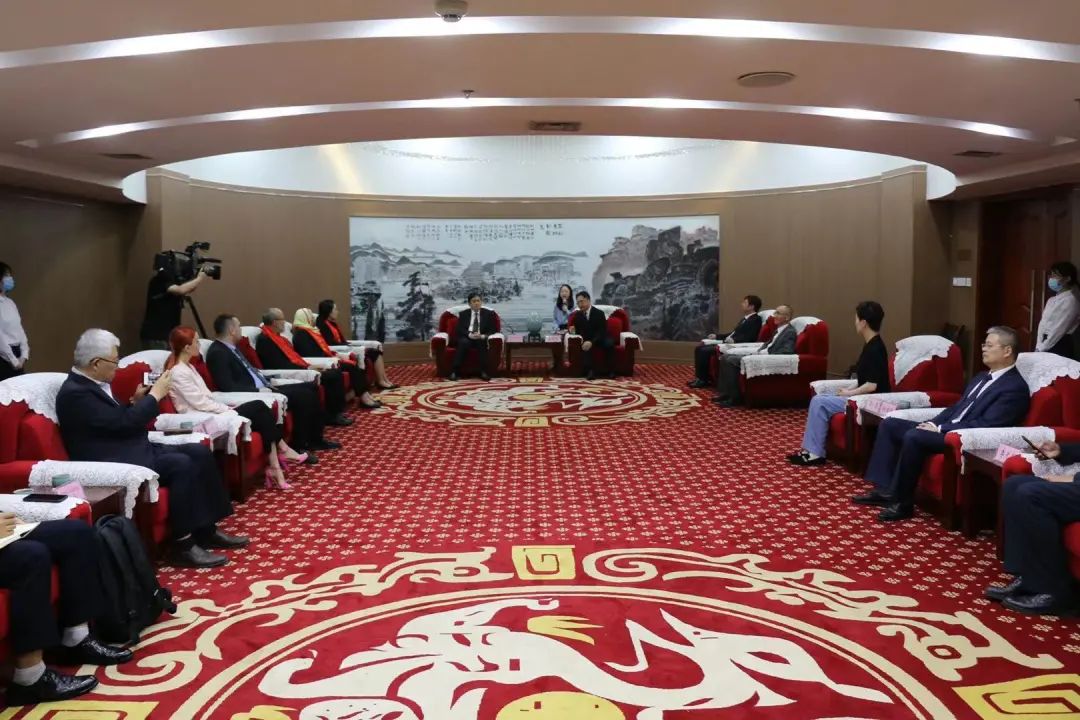Langfang hosts 11th China Design Festival
Langfanghosted The Eleventh (2016) China Design Festival and unveiled the“Beijing-Tianjin-Hebei Area Green Design Corridor” in its efforts to promote the development of green technology in the Hebei province. CECTV visited the event and came back with exclusive photos.

(Photos: Sanni Saarelainen )
LangfangMunicipalPeople’s Government, Daxing District People's Government and Dragon Design Foundation (DDF) hosted The Eleventh (2016) China Design Festival in the 25th and 26th of May in Langfang, which is a city of +800 000 population in Hebei province, between Beijing and Tianjin.
The theme of this year’s festival was “Design Interpreting the World” and accordingly, the festival unveiled the“Beijing-Tianjin-Hebei Area Green Design Corridor,” purposed to promote the development of design industry in surrounding Beijing-Tianjin-Hebei area.

(Photos:
Sanni Saarelainen )
The festival brought top domestic and international design professionals and enterprises together and functioned as a platform for design industry innovation exchange. Effectively, this platform was used for sharing information and other resources to spur new investments involving green technology. The event brief explained that “the Festival is beneficial to making design industry as leading industry of economic and social development in Langfang,” and also pointed out that the festival should improve the “core competitiveness and brand influence of Langfang design industry”.

(Photos: Sanni Saarelainen )
This is not the first and probably not the last time Langfang name will be linked with green design. In fact, the event should be seen as a step in Langfang’s longer path towards eco-smartness, as the city won Merit Award in 2010 for its Langfang Eco-Smart City Master Plan, which included a city centre transportation hub, a northern gateway cultural corridor, and an extensive wetland and aquifer system. The Chinese government has already invested billions of dollars toward infrastructure in the region, referred to as the Beijing-Tianjin Growth Corridor, while preparing for nearly 300 million people to rise to the middle class over the next 20 years.
Global eco-city examples of Stockholm in Sweden, Auroville in India, and Freiburg in Germany have proven that urban planning could hoist the way to sustainable living, and Chinese green efforts, such as Langfang Eco-Smart City Master Plan — if fully realised — could provide timely, essential models for sustainable urban living at a much larger scale, in the massive future China. Until then, promotive events, such as the 11th China Design Festival in Langfang, are the visible milestones and gentle suggestions for the construction investment to turn greener in this part of the world, too.
(责任编辑:Emmi Laine)版权及免责声明
1、本网转载媒体稿件旨在传播更多有益信息,并不代表同意该观点,本网不承担稿件侵权行为的连带责任;
2、在本网博客/论坛发表言论者,文责自负。
-
 共迎新春 共话未来 | 2026
新春将至,万象更新。值此辞旧迎新之际,2026年全球外交官新春贺岁盛典于2025年12月28日在北京盛大举行。活动旨在搭建中外友好交流的桥梁,共庆中国传统佳节,
共迎新春 共话未来 | 2026
新春将至,万象更新。值此辞旧迎新之际,2026年全球外交官新春贺岁盛典于2025年12月28日在北京盛大举行。活动旨在搭建中外友好交流的桥梁,共庆中国传统佳节,
-
 CECTV《声起东方》全球中文经
制片主任:李敏
CECTV《声起东方》全球中文经
制片主任:李敏
- ・《少林点穴的隐秘力量》纪录片在郑州圆满杀青
- ・2025GT世界挑战赛北京亦庄站启幕
- ・北京市侨联召开海外北京会座谈交流会
- ・2025GT世界挑战赛北京亦庄站圆满落幕
- ・短片【未封存的岁月日记】的时代意义
- ・侨智未来·创新人才发展活动举办
- ・2025GT世界挑战赛北京亦庄站筹备进入冲刺阶段
- ・无锡味道 世界共享LA LISTE 2025全球美食
- ・2025“校园星主播”国际展演(韩国站)圆满结束
- ・“勇气少年团”综艺节目开始选拨啦
- ・CECTV《声起东方》全球中文经典朗读节目
- ・美国迈阿密大学访问学者项目
- ・2012第二届中国国际积极心理学大会
- ・首届世界香具文化大会暨高峰论坛在浙江龙泉圆满召开
- ・共迎新春 共话未来 | 2026全球外交官新春贺岁盛
- ・诗琳艺术宫盛大启幕 华夏文化促进会迎新晚会圆满举办
- ・“京堰一家亲 共护一江水” 南水北调中线工程通水进京
- ・百集访谈栏目《健康大讲堂》地龙与健康第六期---惠汝
- ・海外侨胞:海南自贸港封关 让世界共享中国开放发展红利
- ・巴基斯坦驻华大使馆举办第二届职业技术教育与培训(TV
- ・百集访谈栏目《健康大讲堂》地龙与健康第五期---封太
- ・中国中医药食同源AI大健康产业发展峰会在长沙成功举办
- ・北京河南企业商会文旅和传媒委员会成立大会暨文旅与传媒
- ・百集访谈栏目《健康大讲堂》地龙与健康第四期---陈学
- ・CECTV《声起东方》全球中文经典朗读节目
- ・“勇气少年团”综艺节目开始选拨啦
- ・2025“校园星主播”国际展演(韩国站)圆满结束
- ・首届世界香具文化大会暨高峰论坛在浙江龙泉圆满召开
- ・2012第二届中国国际积极心理学大会
- ・美国迈阿密大学访问学者项目









